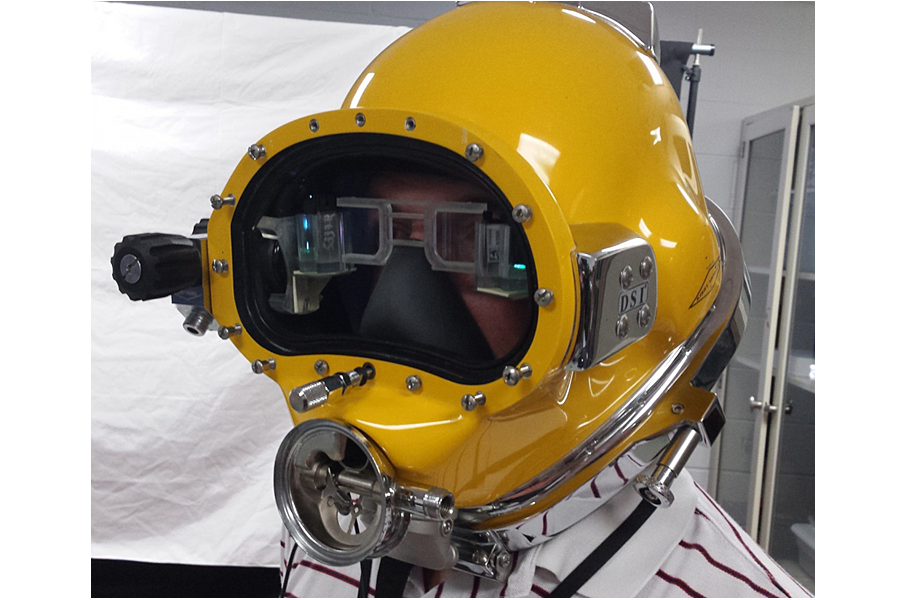'Iron Man' dive helmet sports heads-up display for Navy divers
Loading...
Iron Man, meet Aquaman.
The Navy is developing its own "Iron Man"-like helmet, complete with a heads-up display (HUD) that could superimpose videos of a shipwreck or downed aircraft or show a diver their location, even in zero visibility.
“You have everything you visually need right there within the helmet," David Gallagher, the lead engineer of the Navy’s Underwater Systems Development Project, said in a press release Thursday. “[The system] places the information right before divers’ eyes, with a look and feel comparable to a point-of-view video game.”
The Divers Augmented Vision Display (DAVD) has been shown to more than 20 divers, according to the press release. Mr. Gallagher and his team plan to design components for helmets and face masks for in-water testing in October, followed by expanded field tests in 2017.
The helmet is one of numerous applications of augmented reality (AR)— layering a computer-generated image over a real-world image – militaries are developing, bringing us out of the Stone Age of AR, as one Microsoft developer put it.
“We're like cave people in computer terms,” said Microsoft’s Alex Kipman at the 2016 TED Conference in February. "We've barely discovered charcoal and started drawing stick figures in our caves.”
And as militaries advance this technology, it will likely become available to consumers, benefiting commercial ventures and perhaps making our world safer, as virtual reality pioneer Tom Furness indicated a year ago.
At first glance, the prototype of the helmet looks like a normal dive helmet, save for two screens in front of the diver’s eyes. The screens can display real-time images, which could include sector sonar – showing a diver their location, and the location of dive site – text messages, diagrams, photographs and augmented reality video of a downed airplane, for example.
Currently, a diver must rely on pre-dive briefings to know what to look for and where to look.
The helmet is part of a 14-year strategic plan the Navy started in 2011 to create state-of-the-art diving equipment. Other technologies it is creating in sync with DAVD helmet include miniaturized, high-resolution sonar and enhanced underwater video. Meanwhile, other AR technologies are being developed for the land and sky.
Harris and Applied Research Associates, a communication company, is developing a miniature camera a soldier could wear with night vision goggles, according to The Washington Post. “For the soldier of the future, this means wearing a device that will show them a picture of the battlefield supplemented with digital information such as grid coordinates, the location of friendly troops and maybe in the near future, drone footage streamed from above,” writes the Post.
Since the 1990s, the Israeli Air Force has used the Display and Sight Helmet (DASH) for its F-15 fighter jets, displaying flight information into a pilot's flight helmet. It recently upgraded DASH for its F-35 fighter jets, allowing pilots to initiate commands, such a missile launch, just by glancing in a certain direction.
Gallagher, of the Navy, envisions first responders and commercial divers being able to benefit from the DAVD helmet. But the development of consumer AG systems is being dwarfed by virtual reality systems such as Oculus. Still, the possibilities for AR are endless, Mr. Furness, the virtual reality pioneer, said last year.
After CBS Evening News reported in the 80s on the weaponry Furness was developing for the Air Force, Furness started to receive multiple inquiries a week, from surgeons to firefighters, TechRepublic reported in June 2015.







